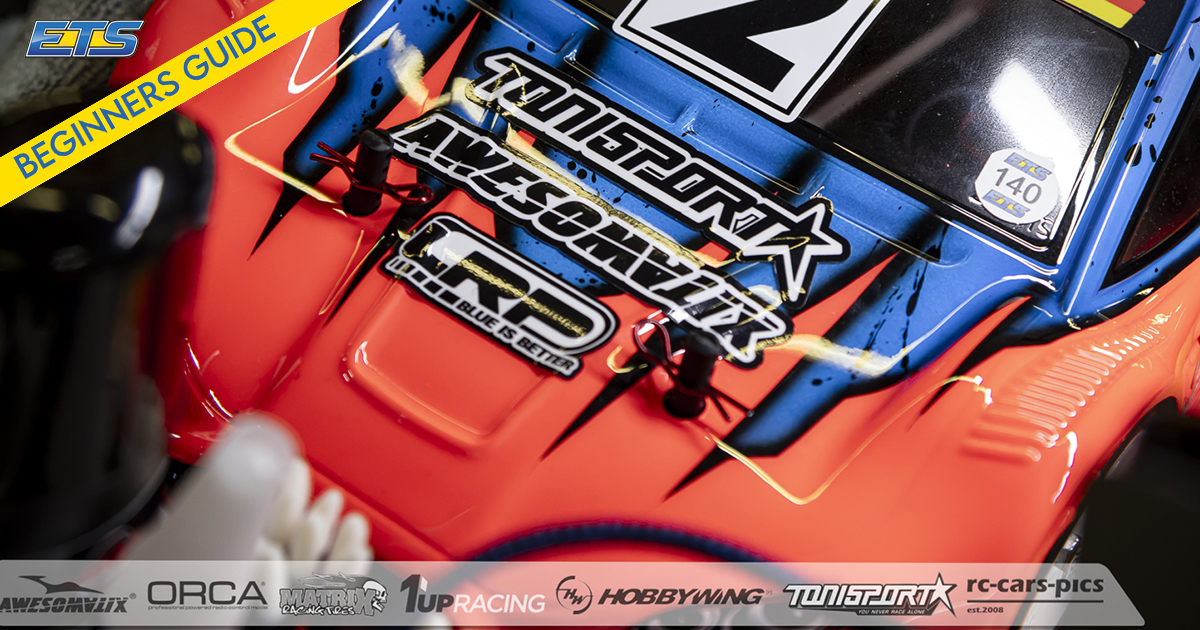The fourth chapter of the ETS Beginners Guide is all about body shells and the rules about them at the Euro Touring Series. We will look into the body shell situation in total, before we step into the world of ETS racing to explain the rules and the reasons behind them. We will also give you as many tips as possible to make your life more easy when it comes to selecting body shells for your next (or maybe your first) ETS race. Let’s dive into this interesting and exciting topic…..
Always developing and quickly changing – the market of body shells in the world of RC
When looking back on the history of 1:10 scale touring car bodies, the market was in the hands of Protoform in the late 90’s and early 2000 years. Yes, there had also been other brands on the market (Hot Bodies for example), but almost every major race saw a driver with a Protoform body on the top step of the podium. It was an easy life for the touring car racers as all they needed to go fast was a Protoform Mazda6 or LTC-R.
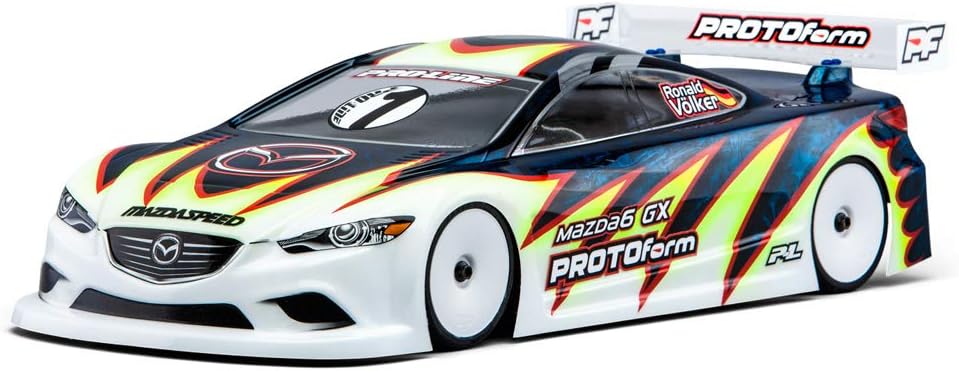
Fast forward, this situation changed dramatically when other companies such as Mon-Tech (with the Racer) or Bittydesign (with the M410) stepped out of the Protoform shadow ten years ago. They saw themselves followed by Xtreme, ZooRacing, Blitz, and the two latest newcomers LensBodies and PIPaero. The manufacturers found themselfes into something like a “body shell war” quickly, and developed new bodies in a short term leaving racers with big headaches before almost every race weekend.
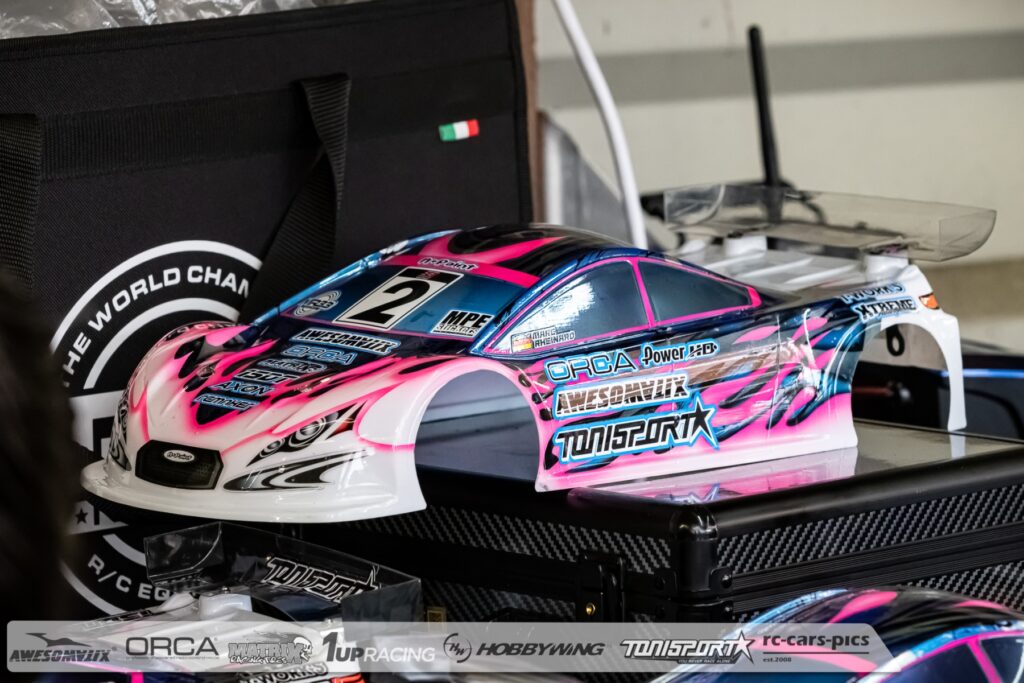
The materials and the quality of the bodies improved year by year which was a great fact, but on the other side we saw bodies getting thinner and thinner to gain every possible percent of performance. Another significant change was the design and the shape of the touring car body shells when manufacturers started to gain more and more downforce from them. For example, today`s Xtreme Twister body has a significant higher downforce compared to the good old Protoform LTC-R.
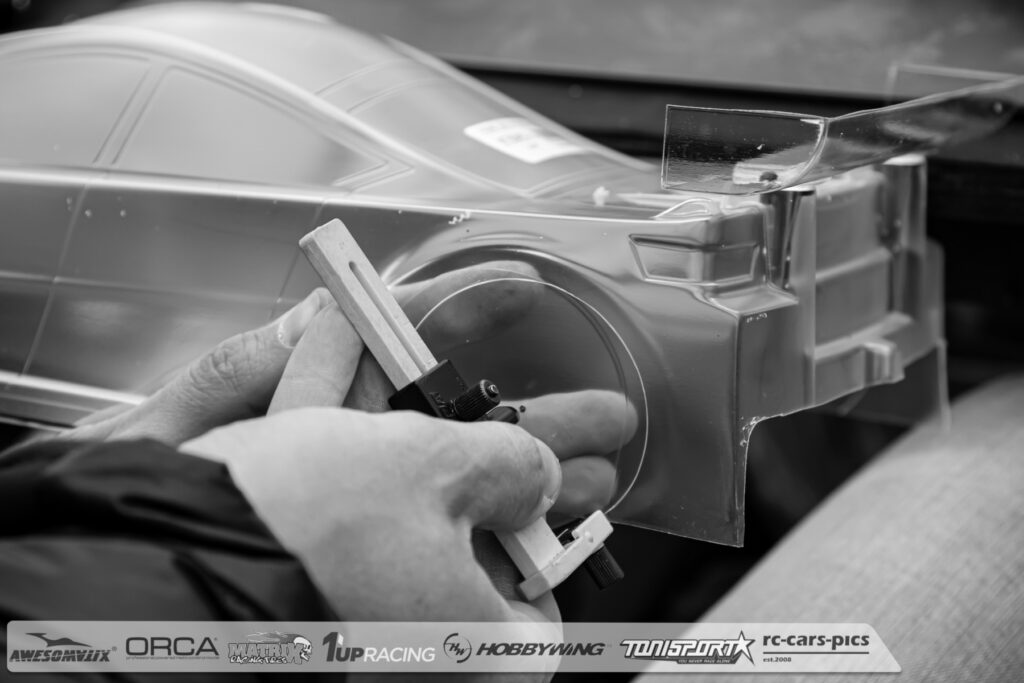
Had all these things been necessary? Well, as this is always a hard question, it is impossible to point out the right answer. It seems that we need development and progress in the world of RC racing, but at some point it looked like everything went a little “too crazy” with a new body getting released every week. There is always a group of racers who like to test new products, and there are others who don’t want to invest too much of their racing budget into testing the “latest and greatest” body shell all the time.
The Euro Touring Series had to deal with the tricky body shell market in these days and decided to create some special rules for the racing series – we will talk about that later on….
Does a body shell really affect the handling of the car on track?
As difficult as it was to answer the question about the general body shell market, it is as easy to answer this one: Yes, the body shell has a huge effect on the handling of every onroad RC car, no matter if it is a touring car, a FWD model, or a Formula chassis! People who are new in the hobby often do not pay that much attention to the body as they try to learn everything else about their car`s setup first.
As faster a car gets, as more a driver will feel the different aerodynamic characteristics of a 1:10 scale touring car body shell. The downforce will increase together with the speed on track. Downforce is the force that acts on the car by deflecting the air downwards. It pushes the vehicle onto the road. The higher the downforce, the better the tyre will grip to the road and as faster the car can take the corners without the centrifugal forces carrying the car off track. If you can take a corner at full throttle, the aerodynamics have done their job properly.
ETS crew
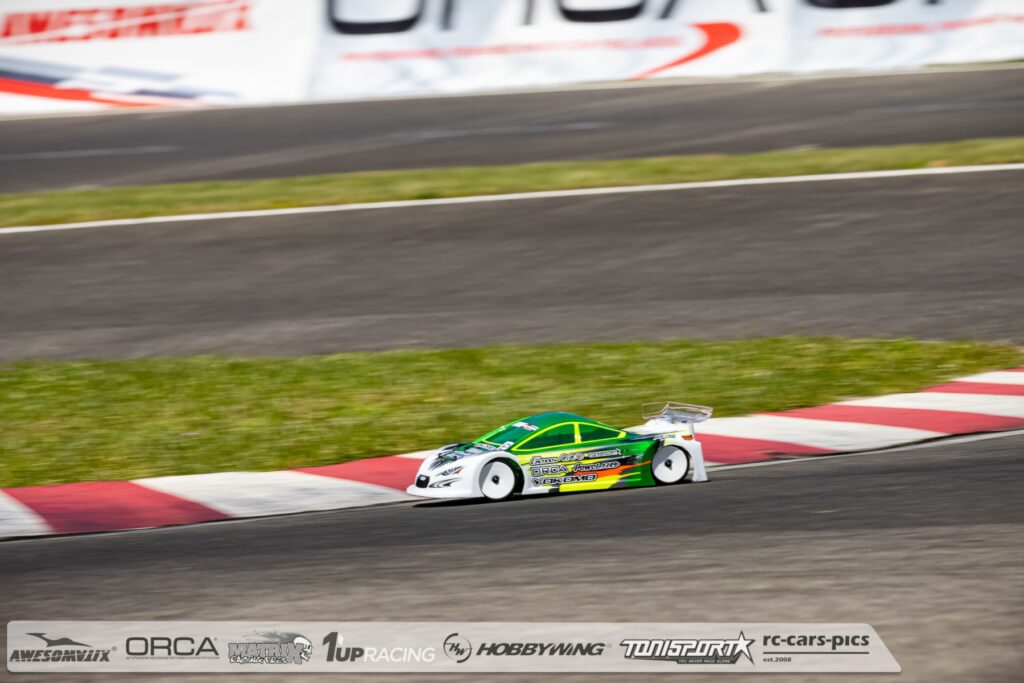
For many newcomers it can be a real eye opener when they realise how much they can improve the handling of their car just by trying a different body shell.
ETS Crew
Sometimes it is just a little change of the body`s position on the car, the change of the rear wing shape, or trying the same body in a lightweight version which transforms a good car into a great car. It is always worth it to play around with different body shells and settings.
When a body is old and has already suffered some damage, replace it with a new one and your car will instantly feel better on track again!
But no matter how big the effect of the aerodynamics turn out on track, it is impossible for racers to own all the different bodies in different weight options, with holes for different positions on the car, and in practice colors and a race paint version as well. The Euro Touring Series went into a different direction with the start of Season #15 2022/23 when the official ETS Body Shell List came into place.
Simple rules and a limited amount of bodies – the ETS Body Shell List has it…

The ETS orga team decided to create a body shell list before Season #15. This list allowed every ETS supporting body shell manufacturer to list a number of body shells for the different racing classes. While this list was counting for a whole season, it gave drivers and organizers a better feeling for the bodies in use and the preperation for the drivers was much easier than before. The body shell list is working very fine since two seasons now and is almost ready for Season #17 2023/24 as well.
Manufacturers can list three bodies for the Matrix Modified and Awesomatix Pro Stock classes. The drivers of these classes can use the listed bodies in whatever weight option they want as long as they are available to the public in official hobby shops.
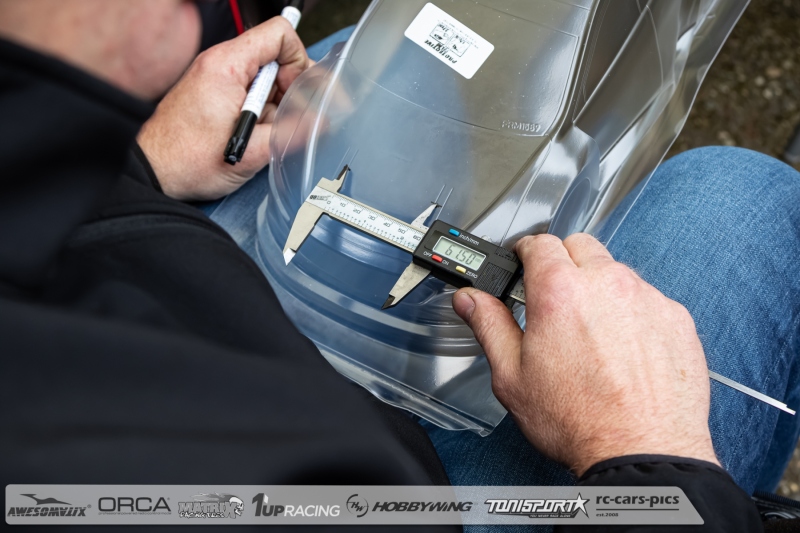
In our “slower” classes Hobbywing FWD, 1up Racing 40+ Masters, and Orca 21.5 Stock, the companies are only allowed to list one body shell in the regular 0,7mm version. The goal was to minimize the amount of bodies for the hobby classes which was the right call in our opinion.
The decision for the 0,7mm versions was made to not force the hobby drivers to use the paper-thin 0,4 or 0,5mm bodies which can immediately break during a contact with another car or a barrier. Yes, you can also damage an 0,7mm shell but they are way more durable then their lighter brothers and sisters 🙂.
All the 0,7mm bodies get marked with a special sticker on the front windscreen during Thursday practice which ensures that every racer is using a shell according to the rules!
The body shell list has become a major part of the ETS in 2022, and until now it was absolutely the right call to go this way. It brought more transparency into the market for the ETS racers and manufacturers and everybody knows what he needs to bring to the track. There are no more scary moments for the drivers when finding out about a new released body some days ahead of an ETS event. The scary days are over 🙂
ETS crew
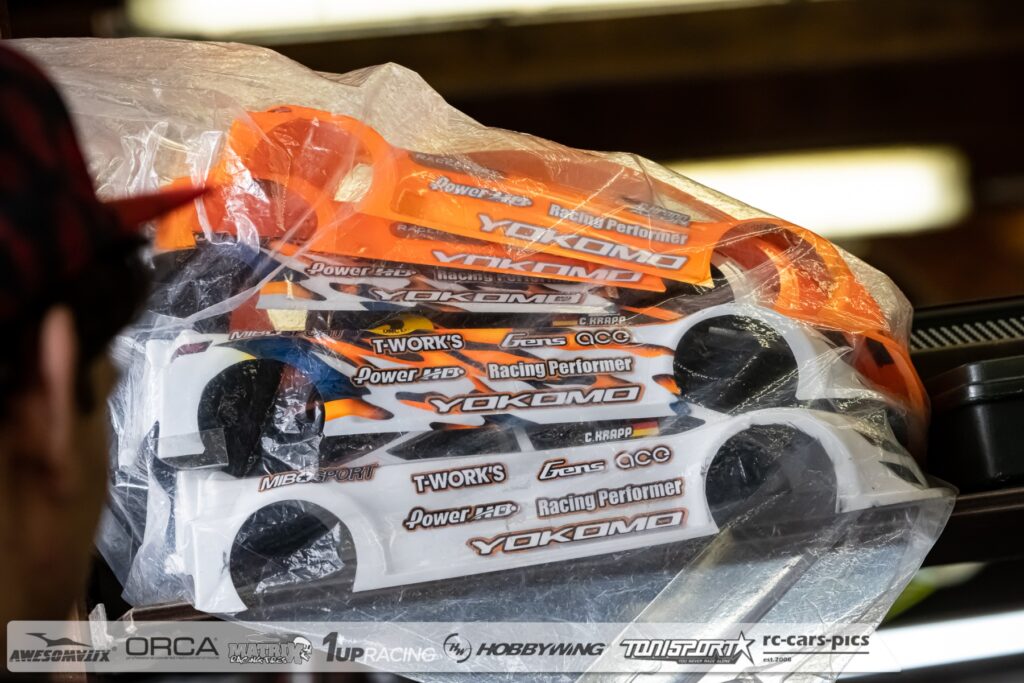
How to choose the right body, and what about all these stiffeners?
First of all, if you are thinking about buying ETS allowed body shells, take a look at the official list which you can find in the rules. The next thing you can do is to just ask your club members, friends, or teammates, which bodies they like the most. If you want to know what the top drivers are using in all the ETS racing classes, just look into the Equipment Charts which are published in every event`s final report after the third round of finals on Sunday.
Do you know what will help you the most? Go for practice and test the bodies yourself. It is always easy to follow a trend by using the same body everybody else is running in your class as it will always give you a good feeling. But it can also happen, that a different body will suit your driving style or the way you are setting up your car better. So just for example: When everybody around you is running a Wolverine and you are not happy with your car, just go on track with a Twister (or vice versa) for example – it is always worth a try and can change your day completely. But please do not test too many bodies during the practice sessions at the event. This can lead you into total confusion as the track will also change a lot etc. We recommend you to find 2 bodies from the list which you like prior to the event and then go into the weekend with them!
ETS Crew
When you scroll through the product pages of hobby shops nowadays, you will notice many body accessories. Body stiffeners, front hood stiffeners, anti-tuck braces, horizontal mounting systems, and many other things. Have you questioned yourself “what the hell you really need” from all these things?
Well, most of these products are very nice and they are a pure joy as they are really beefing up your body. BUT as long as you are running 0,7mm shells in your racing class you DO NOT NEED all these things to have fun on track. For sure, you can mount an anti-tuck or a nice RC Maker mounting system – but your 0,7mm body will do the job even without it.
Everything changes when it comes to the use of 0,5mm and especially 0,4mm bodies in Modified and Pro Stock. You will find body stiffeners in all different versions in the bodies of these racers. They are made to stiffen the ultra-light and thin lexan material in critical parts of the body. With stiffeners installed, the body can handle the enormous downforce at high speed better and will not flex out of shape.
The stiffeners will also help you when driving on a bumpy track or in windy conditions where the bodies sometimes tend to “fold inwards” into the car. Body stiffeners make sense, but they are only a MUST HAVE when running lightweight body shells!
A nice paint job and headlights – that`s what we are dreaming of…
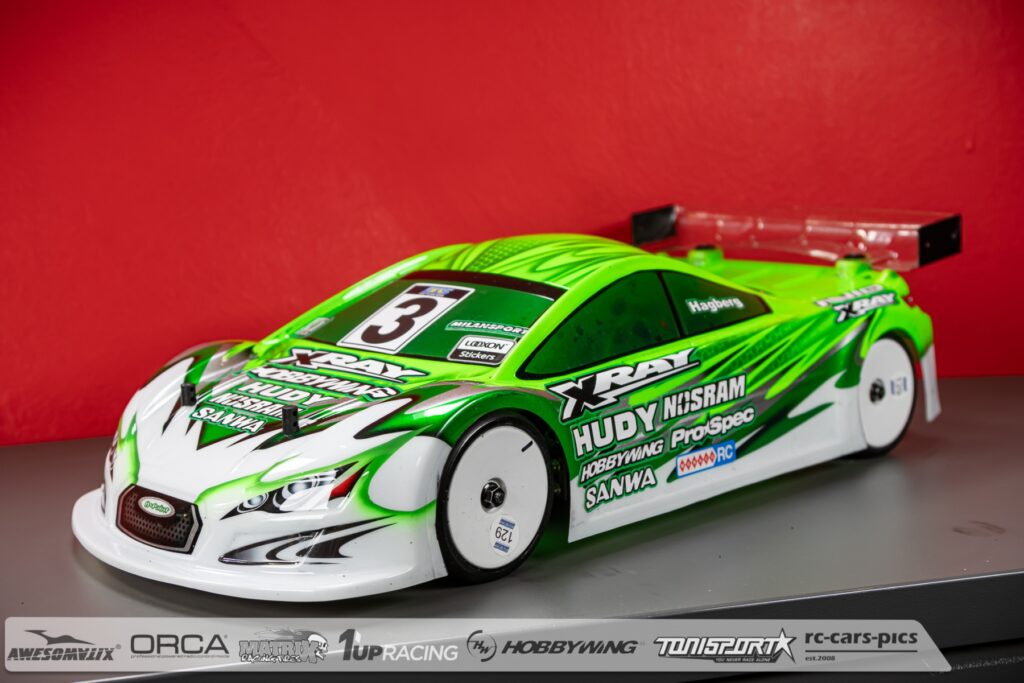
Last but not least, we like to tell you that we LOVE to see a nice paint job on your car. There is no need for a super time demanding or expensive airbrush design – even if it is the greatest thing you can do with your new race body. You can also use some different colors out of the rattle can to make your car look good on track. Single color body shells are acceptable in some ways too (especially for practice bodies) 🙂 BUT please use the headlight decals for the lights and the grill and lights in the rear as well. It looks so much better on track and our ETS photographer Chris will be happy as well as there is nothing which makes him wilder than seeing single color bodies without headlights on track which are looking very poor on camera. Let’s make RC cars look great again 🙂!!!
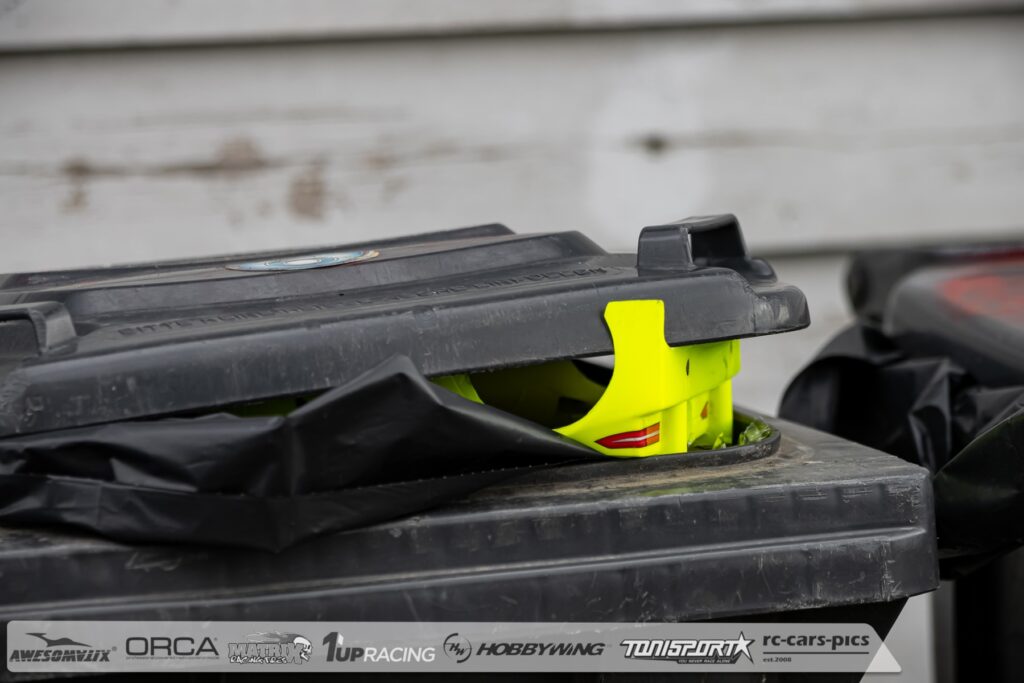
We hope that you have enjoyed reading this little article about body shells… It is a complex topic with many people having different opinions and we will maybe never find the 100% perfect solution to deal with it. For now, we are happy with how it goes and hope that you are feeling good too!

